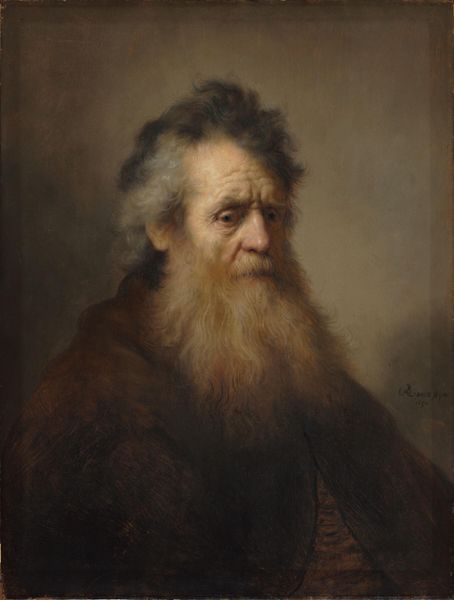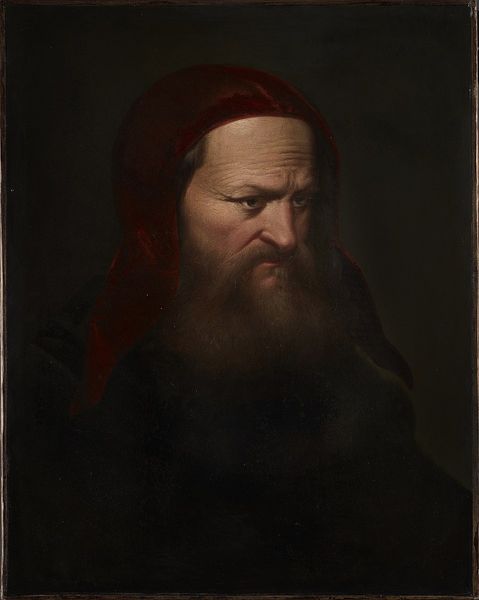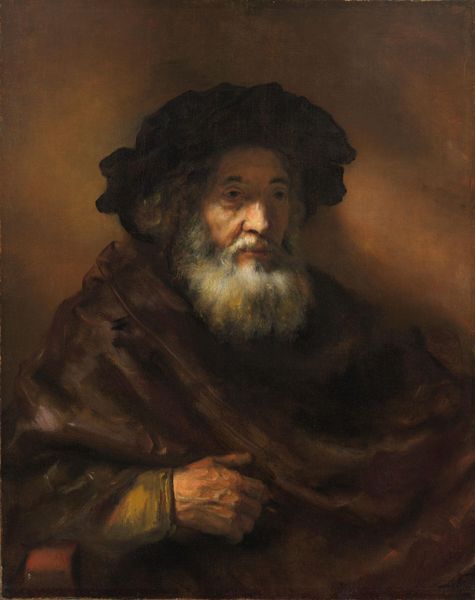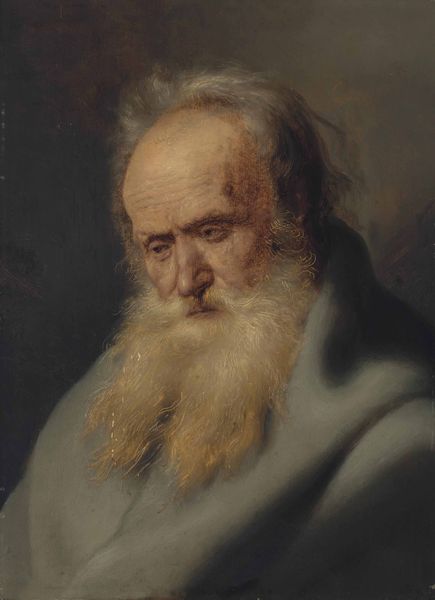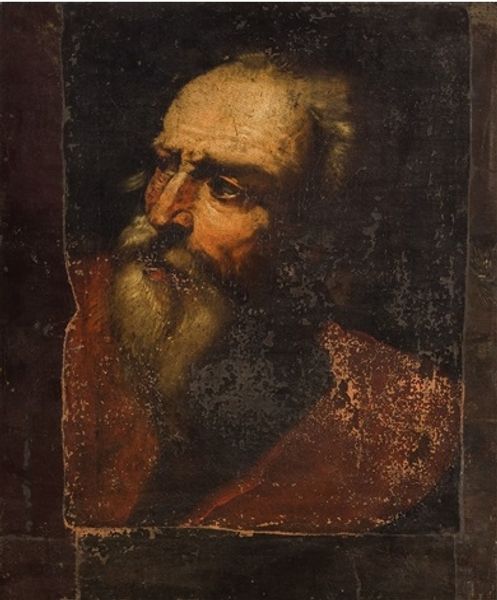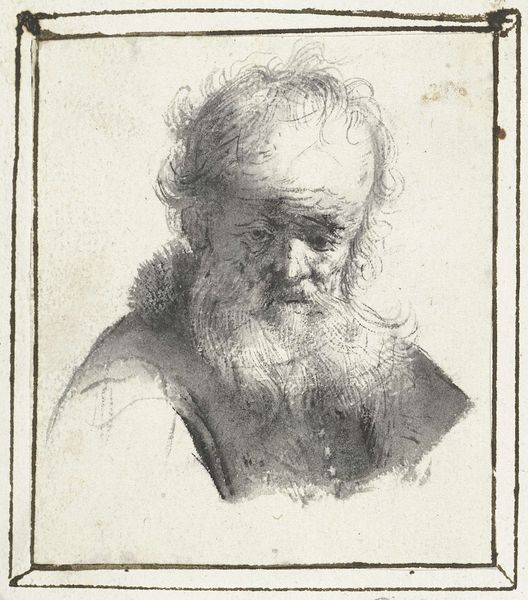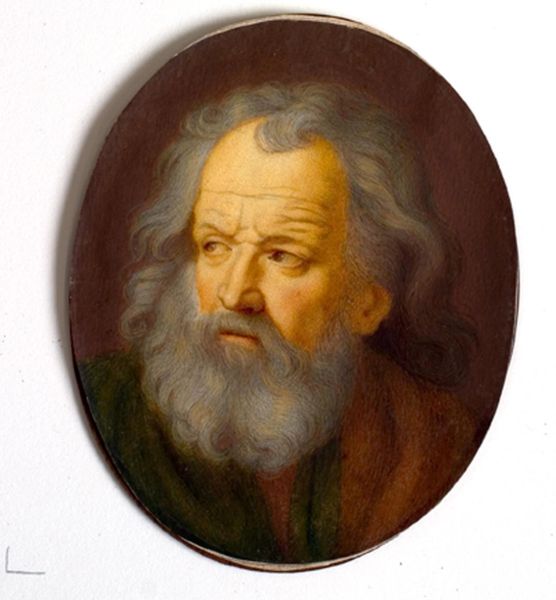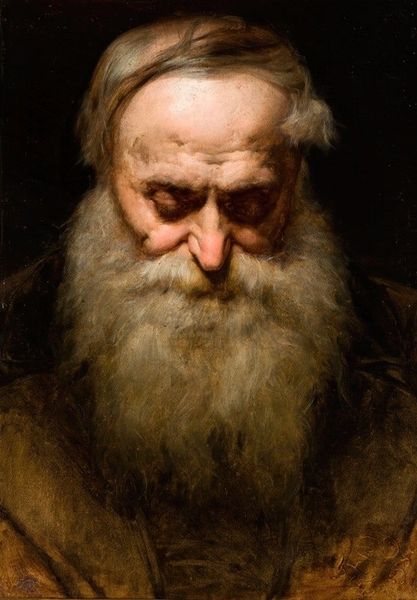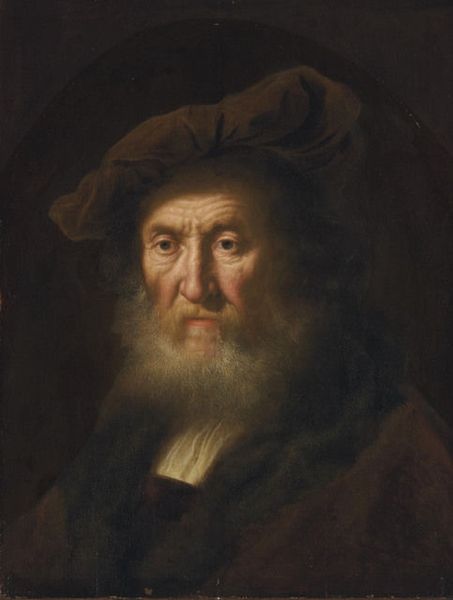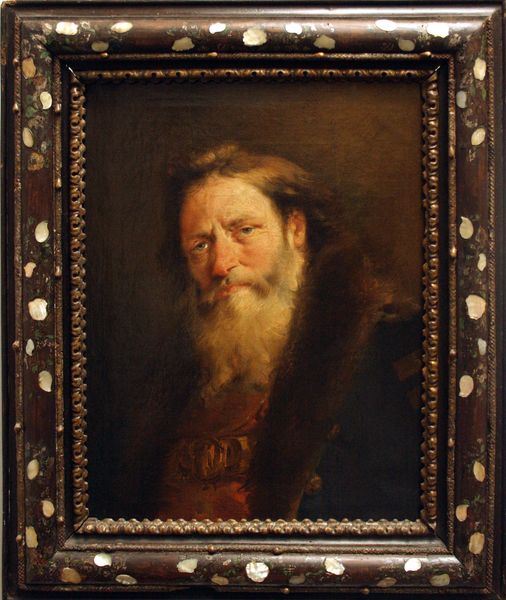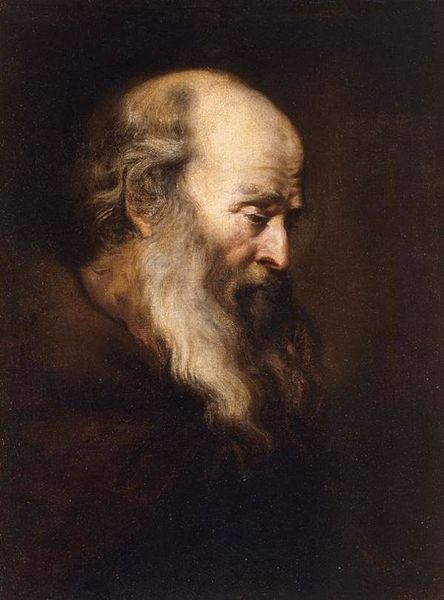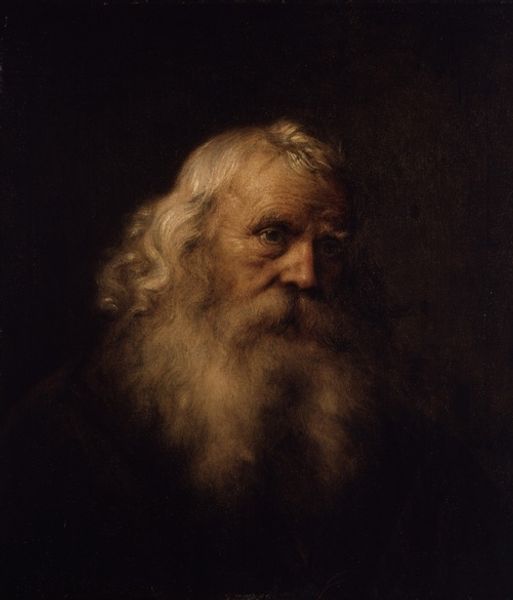
painting, oil-paint
#
portrait
#
figurative
#
self-portrait
#
baroque
#
dutch-golden-age
#
painting
#
oil-paint
#
figuration
#
portrait head and shoulder
#
chiaroscuro
#
portrait drawing
#
facial portrait
#
portrait art
#
realism
Copyright: Public Domain: Artvee
Editor: This painting, “An Old Man,” is by Rembrandt van Rijn and executed in oil. The figure’s gaze is incredibly intense, almost confrontational. It feels very personal and intimate, though I’m unsure who the man is, or what he represents. What strikes you when you look at this piece? Curator: The compelling gaze, as you noted, is key. Consider Rembrandt’s recurring use of older figures – often interpreted as portraits of philosophers, prophets, or even self-portraits reflecting on the passage of time. The wrinkles, the sagging skin - these are not merely physical attributes, but rather embodiments of lived experience. How might Rembrandt be using these symbols to convey something deeper about wisdom or mortality? Editor: That’s fascinating. I hadn’t thought about the wrinkles as symbols themselves, only as signs of aging. So, it's less about just portraying an old man, and more about the *idea* of old age and experience? Curator: Precisely. The chiaroscuro—the dramatic contrast between light and dark—is another powerful tool here. The light emphasizes his face, drawing our eye to the expression, while the darkness shrouds the rest, perhaps suggesting the unknown, or the mysteries of life. Can you sense any cultural associations linked to such use of darkness? Editor: I suppose that might reflect cultural ideas about aging and dying in that period – things you can't know and can't see, making aging feel so unsettling to contemplate! What did the use of chiaroscuro evoke for audiences back then? Curator: Possibly a sense of the sublime. Rembrandt doesn’t shy away from unflattering details; he embraces them, suggesting that beauty and meaning can be found even in decay. The painting becomes an emblem of acceptance and resilience. Editor: So, reading beyond the surface helps unlock so much of its resonance and timeless appeal. I'll never see a portrait quite the same way! Curator: Indeed, by contemplating images as cultural and psychological records, we connect across centuries.
Comments
No comments
Be the first to comment and join the conversation on the ultimate creative platform.

